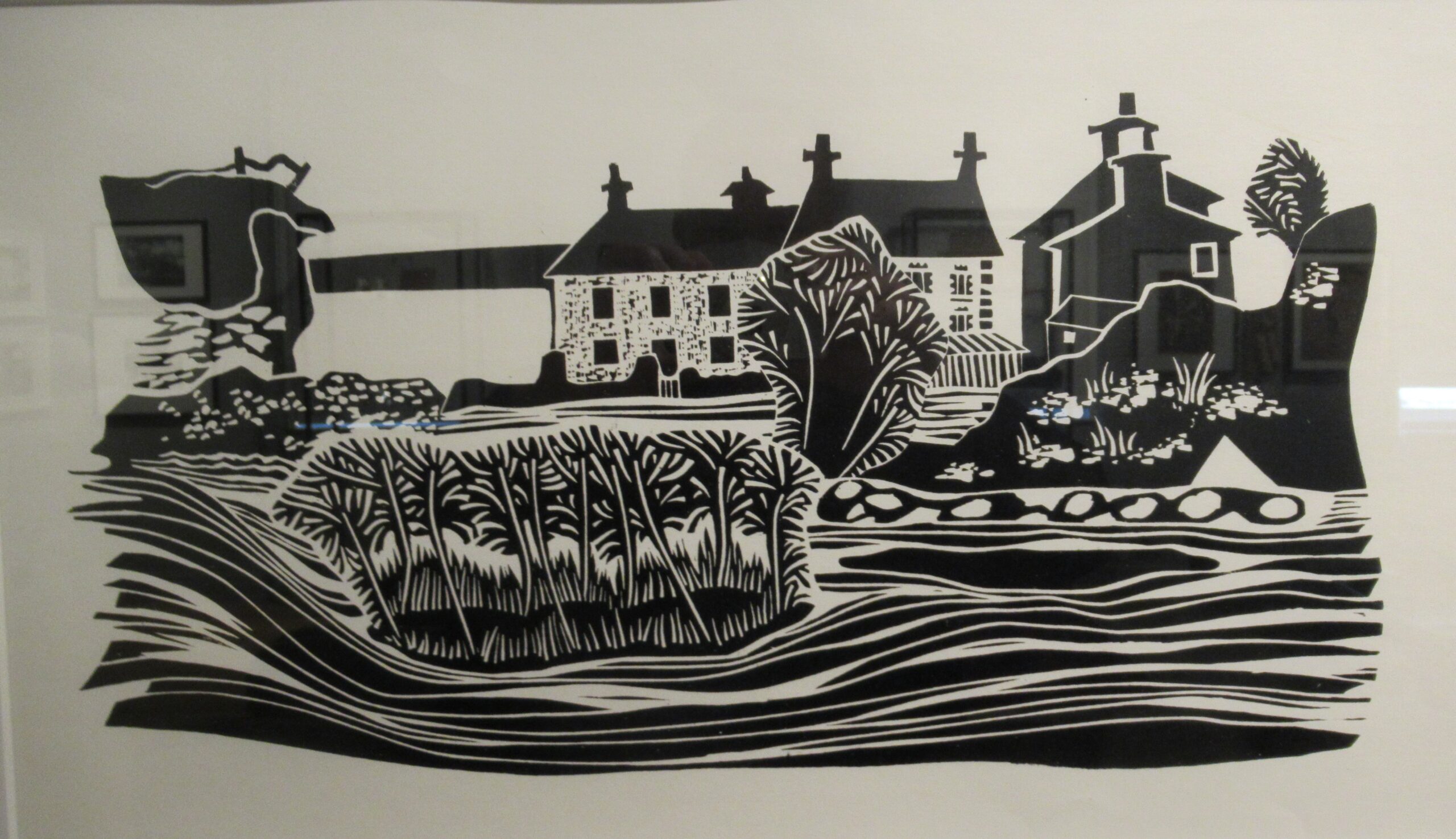In Aberystwyth last week I called in the School of Art to see an exhibition, arranged by Mary Lloyd Jones, and organised by Neil Holland and Phil Garratt, as a tribute to her husband, John Jones, who died last year aged 89. Surprisingly, this is the first time he’s had a show to himself. As a self-effacing man, and like many artists mainly known as teachers, encouragers and animateurs, he didn’t push his own work. But it’s certainly worth seeing and enjoying, for its great variety and accomplishment.
The works are on a small scale. Many are based on what happens when paper’s pressed against ink laid on a prepared surface. But a ‘print’ can be made in many ways, and John Jones took obvious delight in ringing the changes on different techniques. In the show are examples of linocuts, etchings, aquatints and screen prints. John had long mastered the technics of all of them (some of his tools are on display in a case). He was working in a long tradition of print-making in Wales – think of the artists who contributed to the inter-war Gregynog Press books – and in turn helped to stimulate the contemporary interest in printmaking in Wales, especially in mid-Wales, where Aberystwyth Printmakers are active through the work of Ian Phillips, Ruth Jên, Stuart Evans, Paul Croft, Karen Pearce and others.
Could it be that keeping faith with the kind of craft-based and skill-centred art practised by John Jones is one of the secrets of Aberystwyth School of Art’s success? Bob Meyrick, its head, tells me that student applications are buoyant, history of art has been revived, and in general the School is in good shape. On the Saturday I was there the building was bustling with activity.
It’s not all prints in the exhibition. There are also drawings, watercolours, screen prints, works in crayon, charcoal and ink, and a complex panel in wax and dye incorporating lettering. And there are some tightly-made constructions, using rope, nails, wood, cork and other materials. You get a sense of the playfulness and ingenuity that went into the making of them – and a sense that they were often made with the benefit of others, students and learners, in mind. Some of John’s students have expressed their gratitude for his encouragement of young people in the visitors’ book: one writer says her daughter became a curator, inspired by John’s role in the National Woollen Museum, Drefach Felindre. There must be dozens of other beneficiaries of his teaching and encouragement, from Aberaeron School and the other places in which he taught.
Apart from his versatility of technique and style, what strikes you about the pictorial works in the exhibition is John Jones’s loyalty to specific landscapes and what they meant to him. He was born in Ynys-hir, Rhondda, and the village left its mark in an early drawing, made when he was a student at Cardiff College of Art in the early 1950s. Later, other places clearly stamped themselves on his imagination: Aberarth, Nant Gwrtheyrn, Parys Mountain and Menhir des Droits in Brittany. The different characters of all of these locations emerge strongly from the drawings, prints and their divergent styles.
The same intense concentration on special place is carried over into another exhibition in the School of Art, a PhD show by Carmen Mills. It stems from her residencies with the Royal Commission on the Ancient and Historical Monuments of Wales on Ynys Enlli in 2018 and 2019. In her drawings and constructions she echoes the resonances of the archaeological remnants of the island’s monastic past, where the material and non-material worlds are separated, as she says, by ‘the thinnest of membranes’, and asks us to excavate her works as evocations of the passage of long time.
John Jones (1932-2021) and Carmen Mills’s Jacob’s Ladder are both on at the School of Art, Aberystwyth University until 29 April.







Leave a Reply to Gillian Lewis Cancel reply